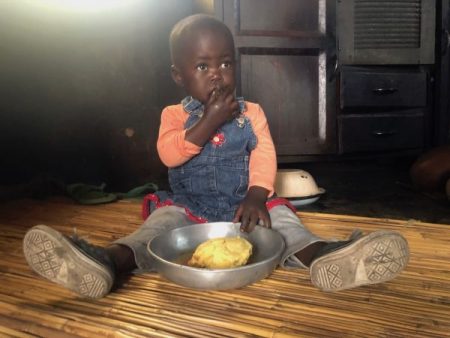
In the rural Chiweshe Communal Area, about two hours north of Zimbabwe’s capital Harare, 18-month-old Ashley Muzhange tucks into a bowl of vitamin A orange maize sadza. Sadza, a thickened porridge made from finely ground maize grain with a side of stewed vegetables, is the staple dish for rural families.
Ashley’s sadza is made from biofortified maize, conventionally bred by researchers at the International Maize and Wheat Improvement Center (CIMMYT) under the work of HarvestPlus to contain a higher amount of nutritious vitamin A.
As Zimbabwe’s child malnutrition rate peaks above the international threshold for emergency response, nutritious vitamin A orange maize gains ground on the national market.
Recent prolonged drought pushed malnutrition to levels not seen in over 15 years, with almost 33,000 children in need of urgent treatment for severe acute malnutrition, according to the United Nations Children’s Fund (UNICEF). Many experience micronutrient deficiencies, since their diets lack the vitamins and minerals required for growth and development.
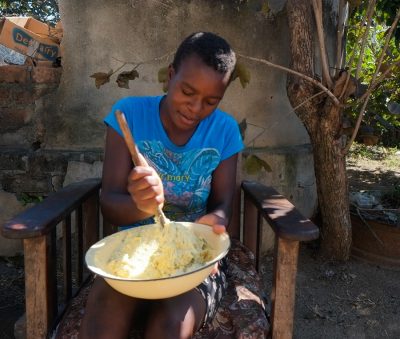
According to the World Health Organization, 35.8 percent of preschool aged children suffer from vitamin A deficiency. The leading cause of preventable blindness in children, it compromises the immune system increasing the risk of death from diseases like measles, diarrhea and respiratory infections.
Biofortification increases the density of vitamins and minerals in a crop through conventional plant breeding or agronomic practices. When consumed regularly, biofortified crops generate measurable improvements in health and nutrition. The process develops crops rich in nutrients for consumers as well as the agronomic characteristics like drought and disease resistance valued by farmers. It is considered a sustainable way to bring micronutrients to populations with limited access to diverse diets.
Even though baby Ashley is unaware her sadza not only fills her stomach, but also provides her with a dose of vitamin A, her family is conscious of the benefits.
“This orange maize assures me that my daughter gets a nutritious meal and means we don’t only rely on the supplements provided by the government,” said Lilian Muzhange, her mother.
Orange the color of health
The farming family first began trialing the biofortified vitamin A orange maize in 2015 and are now growing it in place of traditional white maize. The nutritious variety contains high levels of beta-carotene, a vitamin A precursor that produces the rich orange color and once ingested is converted into the micronutrient, acting as an antioxidant to protect cells.
“Our family now prefers the new vitamin A orange maize over the white maize, as it has great health benefits for my children and granddaughter and the taste is delicious. The sadza truly is better,” said Ashley’s grandfather Musonza Musiiwa. “I was also pleased the variety is drought tolerant. Despite a dry spell in January my maize was able to yield a good harvest.”
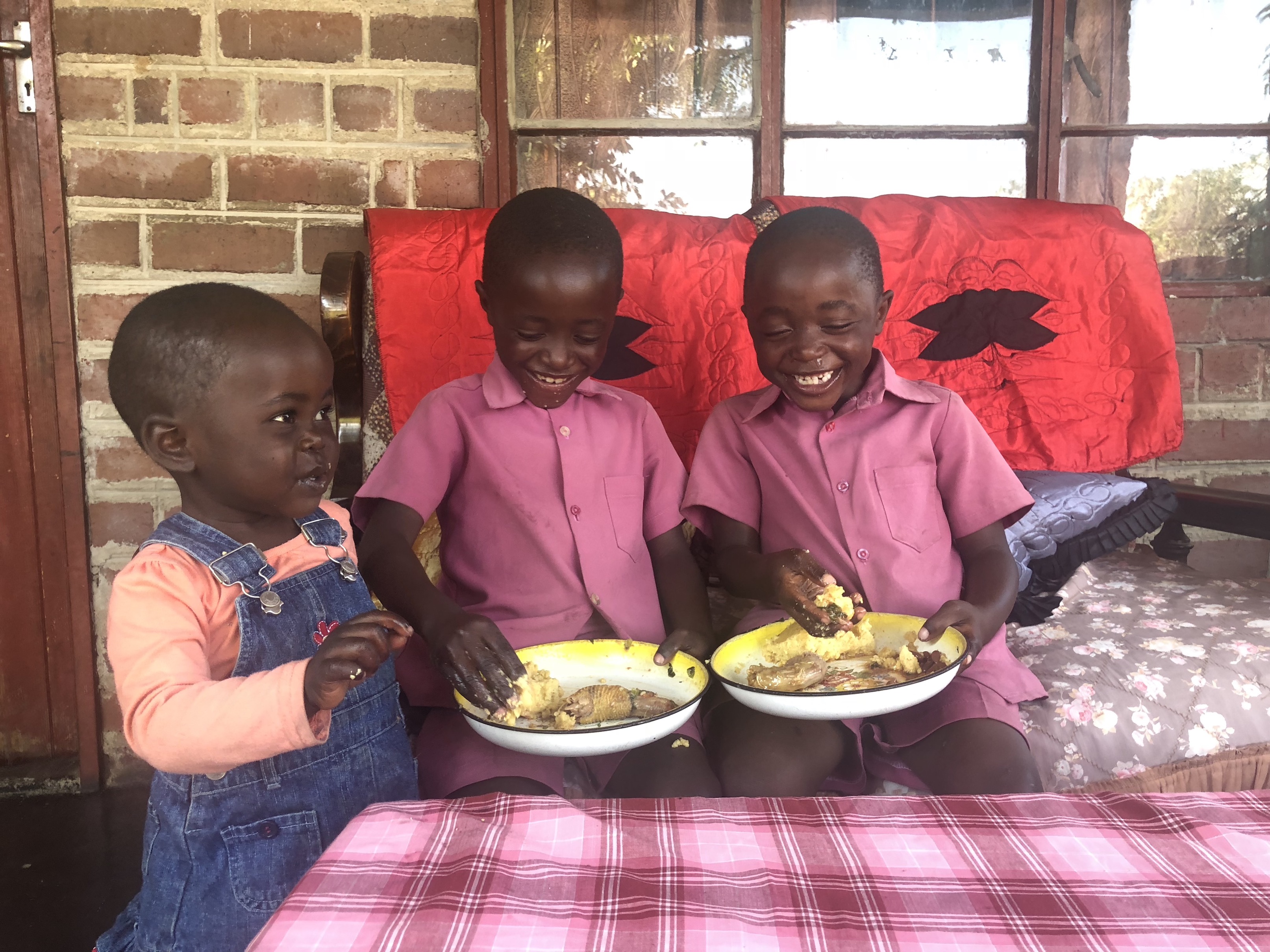
Rural diets mainly consist of what farming families can grow, which is predominantly maize, said CIMMYT maize breeder Thokozile Ndhlela. The majority of rural households do not meet minimum dietary diversity, reliant on a cereal-based diet where meat is a rarity, the Zimbabwe Food and Nutrition Council finds.
“White maize traditionally used for the staple sadza is predominantly starch and very low in nutritional value,” said Ndhlela, who leads CIMMYT’s biofortified breeding efforts in Zimbabwe. “Biofortifying this staple crop ensures consumers have access to nutritious food season after season as farmers continue to grow it.”
Musiiwa not only sees the health and agronomic benefits of vitamin A orange maize, but has also identified its economic opportunity. The farmer is planning to increase the amount he grows to capitalize on the market he believes is set to grow.
Getting vitamin A maize into farmers’ fields and onto plates
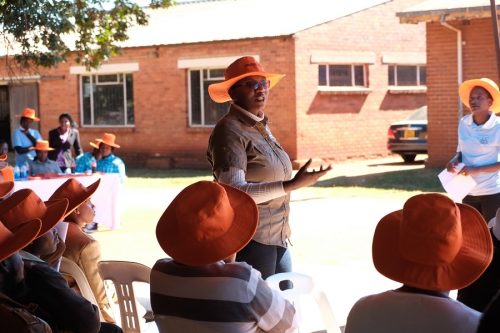
For the new biofortified maize to be part of the food system it must be commercialized creating a full value chain, said Sakile Kudita, a demand creation researcher with HarvestPlus, a program improving nutrition and public health by developing and promoting biofortified food crops.
“Vitamin A orange maize needs to be a product millers take up and processed foods are made of, so that seed companies have an incentive to keep producing seed and farmers have an incentive to grow more than just for consumption but also sale in order to generate income,” she said.
The efforts of HarvestPlus and CIMMYT to engage government, food processors and seed companies at field days, where they learn about the nutritional and agronomic benefits and taste the orange maize have yielded success, said Kudita. Working with the government, four biofortified varieties have been commercialized since 2015.
Prime Seed Co, a subsidiary of the regional certified seed company Seed Co, was the first company commissioned by the government to commercialize vitamin A orange maize in Zimbabwe and now sells the variety Musiiwa uses in his field.
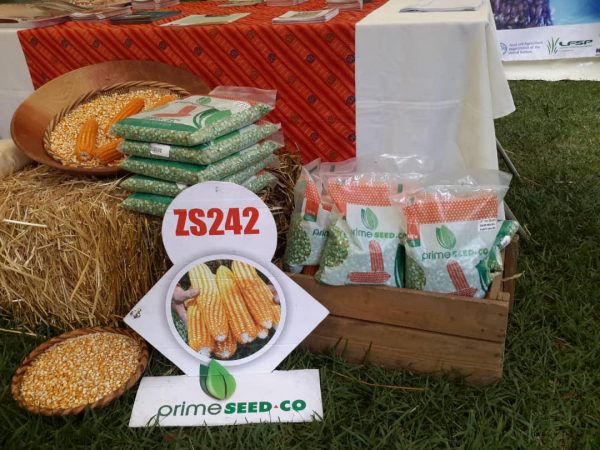
“Through our partnership with CIMMYT and HarvestPlus we are developing a market for vitamin A orange maize in Zimbabwe,” said Masimba Kanyepi, a sales manager at Prime Seed Co. “We have seen our sales improve since launching the first variety and expect an increase.”
Kanyepi is confident the market will grow following a new government regulation requiring all processed maize products to contain added micronutrients, including vitamin A, through fortification.
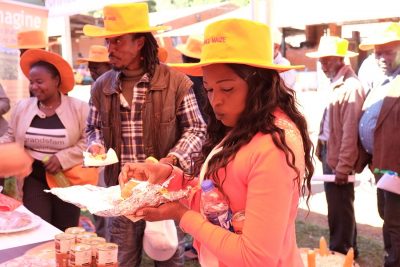
“Adding vitamin A to maize at the processing stage is expensive for food companies due to the cost of importing the vitamin from overseas,” said Kanyepi. “Buying vitamin A orange maize grown by local farmers already biofortified at the same price as the white variety makes economic sense.”
Food companies see the saving with Zimbabwe manufacturer, Cairns Foods, confirming it’s taking steps to include biofortified maize in its cereals and biofortified beans in its canned products.
With food processors and millers buying vitamin A orange maize there is demand for farming families like the Musiiwas to grow more, ensuring not only a boost to their health but also their livelihood, said Kudita.
Breeding for a more nutritious future
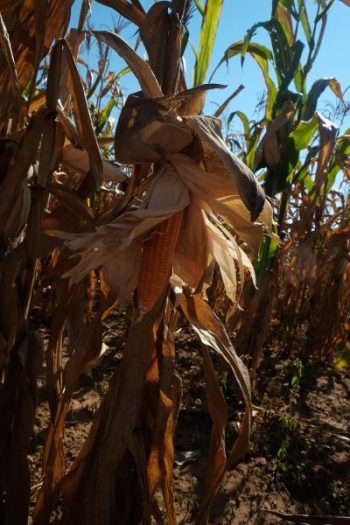
Nutritional studies show vitamin A biofortified maize is as effective as supplementation in improving total body stores of the micronutrient, and significantly improving visual function in children with a marginal deficiency.
With maize the preferred staple in sub-Saharan Africa, where the World Health Organization records almost half of all children 6 to 59 months as vitamin A deficient, biofortification is a sustainable solution to improve health in the region, said CIMMYT’s Ndhlela. Across Africa almost 50 varieties of biofortified maize have been released onto the market.
The crop diversity found in the maize species is key to nutritional gain. The plant grows in distinct environments and has developed a diverse range of valuable traits including nutritional properties.
Following a lengthy analysis of thousands of samples in the CIMMYT Maize Germplasm Bank researchers discovered native landraces and varieties from South and Central America containing increased levels of beta-carotene, explained Ndhlela. These were included in breeding programs in Africa and crossed with local varieties to ensure they were fit for the subtropical climate and were tolerant to local biotic and abiotic stresses.
Working alongside Zimbabwe’s national breeding program Ndhlela continually monitors, improves and combines dozens of characteristics, which include high yield potential, nitrogen use efficiency, and tolerance to drought, into new varieties that meet farmers’ preferences.
The most recent biofortified varieties contain about 39 percent more vitamin A compared to the first, she said.
“CIMMYT’s support through free access to maize germplasm and breeding expertise has allowed us to continue developing this nutritious maize,” said Prince Matova, a maize breeder with the Zimbabwe Ministry of Agriculture. “In the next few years we expect to release two more varieties.”
At the end of the day, farming is a business and farmers value varieties with high yield, adapted to stress conditions. The breeders are currently trialing new vitamin A maize varieties with the hope of identifying those with the potential to yield as much as the traditional white varieties and are already garnering positive feedback from farmers.
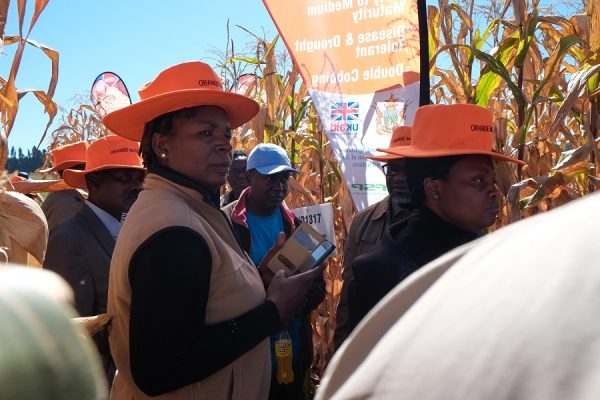
CIMMYT’s biofortified vitamin A maize breeding is supported by HarvestPlus. HarvestPlus improves nutrition and public health by developing and promoting biofortified food crops that are rich in vitamins and minerals, and providing global leadership on biofortification evidence and technology. HarvestPlus is part of the CGIAR Research Program on Agriculture for Nutrition and Health (A4NH). CGIAR is a global agriculture research partnership for a food secure future. Its science is carried out by its 15 research centers in collaboration with hundreds of partner organizations. The HarvestPlus program is coordinated by two of these centers, the International Center for Tropical Agriculture (CIAT) and the International Food Policy Research Institute (IFPRI).
HarvestPlus’ principal donors are the UK Government; the Bill & Melinda Gates Foundation; the US Government’s Feed the Future initiative; the European Commission; and donors to the CGIAR Research Program on Agriculture for Nutrition and Health. HarvestPlus is also supported by the John D. and Catherine T. MacArthur Foundation.

 Nutrition, health and food security
Nutrition, health and food security 

